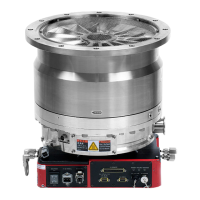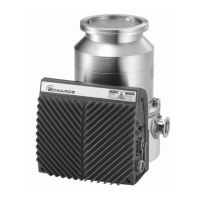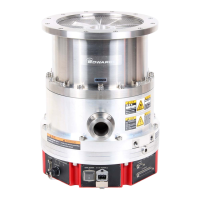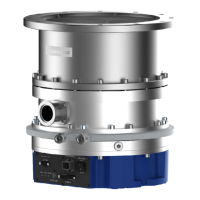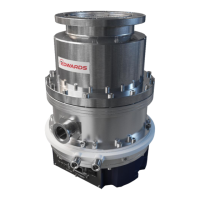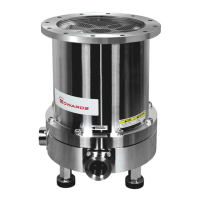1. Oil-free
Rotor blade (1) is supported by the magnetic bearing without any mechanical contact. Therefore, the
STP pump requires no lubrication oil, unlike conventional turbomolecular pumps using ball bearings.
2. Low vibration
The magnetic bearing consists of 5 pairs of active magnetic bearings. The rotor is supported in the
radial direction by 4 pairs of active magnetic bearings that consist of a radial sensor (3) and a radial
electromagnet (4). A pair of active magnetic bearings in the axial direction consists of an axial sensor
(5) and an axial electromagnet (6) to support the rotor in the axial direction. Because the rotor is
supported without any mechanical contact, it can rotate with low vibration.
3. High reliability
Unlike conventional turbomolecular pumps using ball bearings, the magnetic bearings do not require
replacement because there is no friction. To be safe when the magnetic bearings are broken, touch
down bearings (7) have been installed. They do not contact the rotor during the regular operation.
The rotor and magnetic bearing status are continuously monitored via the circuits detecting rotor
displacement, rotational speed, and pump temperature. If an abnormality/error occurs, the rotor will
stop.
4. Compact size (Integrated control unit)
For saving space, the STP pump has the mounted control unit (8), which includes the power supply
that converts the alternating current input to direct current output. In addition, the following circuits
are integrated into the control unit; the magnetic bearing control circuit, the motor drive circuit driving
the rotor blade, the supervisor circuit monitoring pump operation status and operating the pump in
remote operation mode.
5. Temperature management system
The Temperature Management System (TMS) maintains the temperature of the turbomolecular
pump by monitoring the temperature with a thermistor in the base part of the STP pump and
operating the TMS valve and TMS heater ON/OFF to maintain a constant temperature of the STP
pump.

